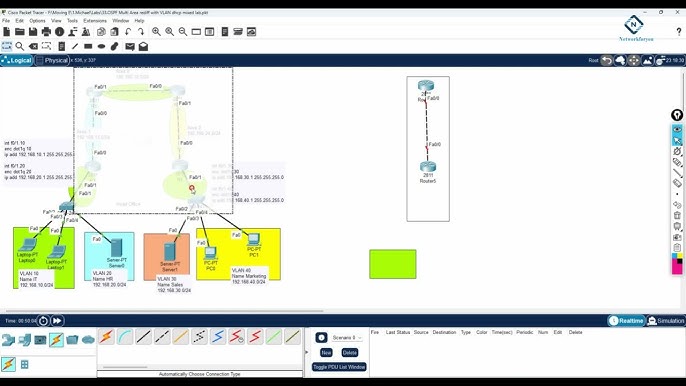Understanding VAMOS: Adaptive Multi-User Voice Channels in a Single Slot
telcomatraining.com – Voice communication technology has evolved significantly, allowing for efficient use of available spectrum. One such advancement is the VAMOS (Voice services over Adaptive Multi-user channels on One Slot) technology, which optimizes voice transmission by enabling multiple users to share a single time slot. This technology is a breakthrough in spectrum efficiency, particularly for GSM networks.
In this article, we will explore how VAMOS works, its advantages, and its impact on modern telecommunication systems.
What is VAMOS?
VAMOS is an innovative enhancement to the GSM (Global System for Mobile Communications) standard. It allows two independent voice calls to be transmitted within a single time slot, effectively doubling the capacity of existing GSM infrastructure without requiring additional spectrum.
This technology leverages Quadrature Phase Shift Keying (QPSK) modulation and advanced interference cancellation techniques to ensure clear communication between users sharing the same slot. By using different training sequences and adaptive multi-user detection, VAMOS prevents cross-talk and maintains high voice quality.
How VAMOS Works
VAMOS operates by using:
- Dual Transmission per Time Slot: Traditional GSM assigns one user per time slot, but VAMOS enables two users to share the same slot.
- QPSK Modulation: This modulation scheme enhances spectrum efficiency while maintaining reliable communication.
- Adaptive Multi-User Detection (AMUD): This technique helps distinguish and decode signals from multiple users within the same time slot.
- Interference Management: Advanced algorithms filter out unwanted signals, ensuring clarity and minimizing disruption.
These features allow network providers to enhance call capacity without additional frequency bands, making VAMOS an attractive solution for high-density areas.
Advantages of VAMOS
Implementing VAMOS technology provides several key benefits:
- Increased Network Capacity: By enabling two users per time slot, VAMOS effectively doubles the voice capacity of existing GSM networks.
- Spectrum Efficiency: Maximizes the use of available frequencies without requiring additional bandwidth allocation.
- Cost Savings: Network operators can handle more calls with existing infrastructure, reducing the need for costly upgrades.
- Enhanced Voice Quality: Despite sharing a slot, advanced signal processing techniques ensure minimal degradation in call clarity.
- Backward Compatibility: VAMOS is designed to work with existing GSM networks, allowing a smooth transition without major modifications.
Challenges and Considerations
While VAMOS offers significant benefits, it also presents some challenges:
- Increased Processing Requirements: More sophisticated algorithms are needed to separate signals effectively.
- Device Compatibility: Not all mobile devices support VAMOS, requiring updates or new handsets.
- Network Optimization: Operators must fine-tune their networks to balance load and minimize interference.
Despite these challenges, VAMOS remains a valuable technology for maximizing GSM network efficiency.
Conclusion
VAMOS represents a major step forward in optimizing voice communication over GSM networks. By enabling multiple users to share a single slot, it significantly enhances capacity, reduces costs, and improves spectrum utilization. As mobile networks continue to evolve, VAMOS plays a crucial role in ensuring efficient and high-quality voice services worldwide.
With ongoing advancements in telecommunication technology, adaptive multi-user voice channels like VAMOS will continue to shape the future of mobile communication, making connectivity more efficient and accessible for all.






